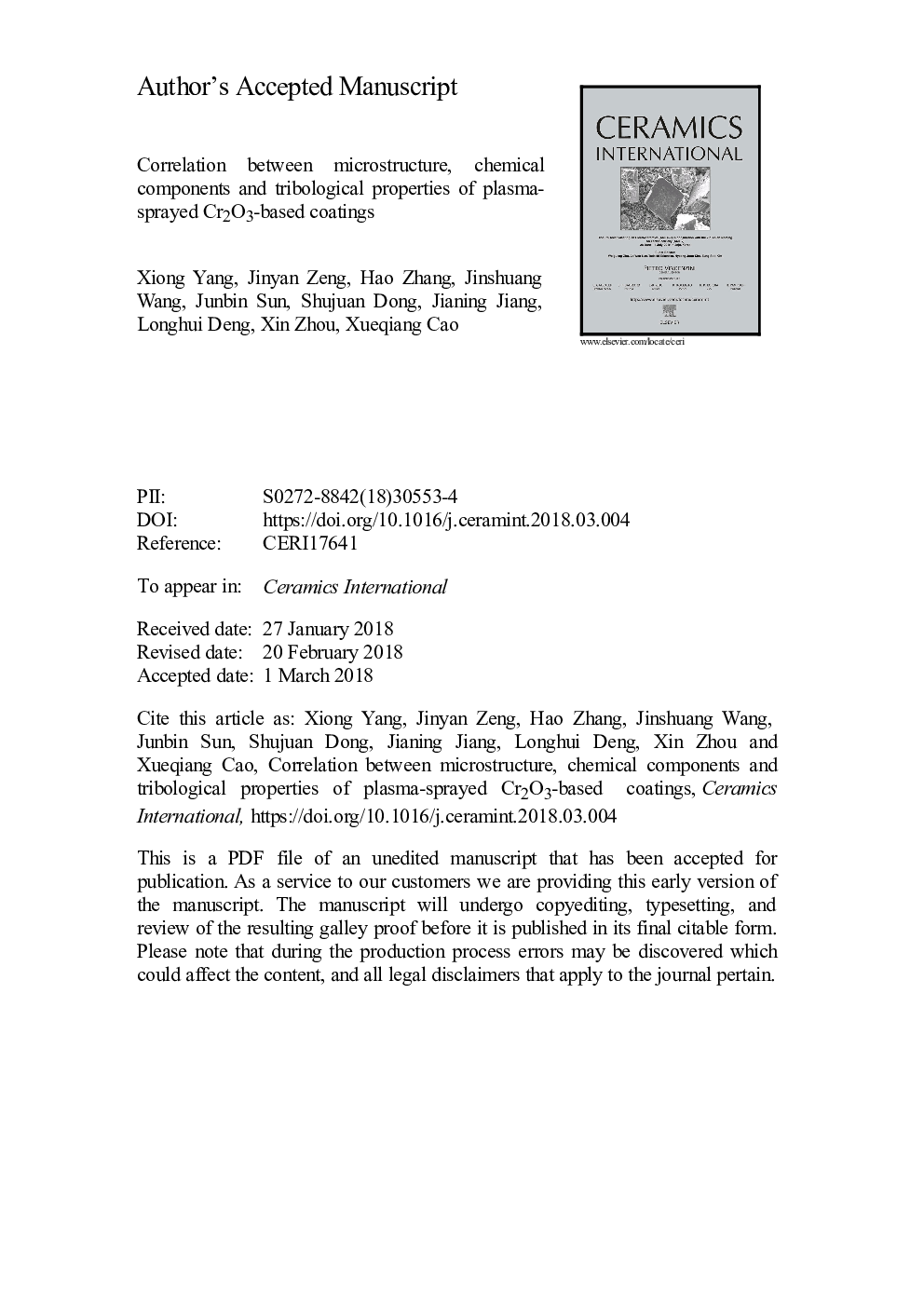| Article ID | Journal | Published Year | Pages | File Type |
|---|---|---|---|---|
| 7886917 | Ceramics International | 2018 | 43 Pages |
Abstract
The wear resistance of chromium oxide (Cr2O3) coatings could be improved by doping modification and changing the structural scale, etc. In this study, micrometric Cr2O3 coatings were doped with different additives, CeO2 and Nb2O5. Moreover, Cr2O3 coatings were deposited from nanostructured feedstock by the combination process of plasma spraying and dry-ice blasting. The correlation between the microstructure, chemical components and tribological properties of plasma-sprayed Cr2O3-based coatings was discussed based on the investigation of their porosity, hardness and friction behaviors. The results showed that the composite coatings doped with additives exhibited a higher microhardness, corresponding to a lower porosity than pure Cr2O3 coating under the identical plasma-spray condition. CeO2 constituent was found to improve the wear resistance of Cr2O3 coating while Nb2O5 incorporation corresponds to a steep rise in the friction coefficient. The mismatch of coefficient of thermal expansion (CTE) between Cr2O3 and Nb2O5 lamellae facilitated the origin of fatigue cracks and the formation of microfracture pits. Although the combination process promotes a porosity reduction, the nanostructured Cr2O3 (n-Cr2O3) coatings present a lower microhardness than micrometric coatings, due to their loosen microstructure from insufficient plasma power compared to microscaled coatings. The wear mechanisms of both the micro- and nanometric Cr2O3 coatings are fatigue cracks and material transfer.
Related Topics
Physical Sciences and Engineering
Materials Science
Ceramics and Composites
Authors
Xiong Yang, Jinyan Zeng, Hao Zhang, Jinshuang Wang, Junbin Sun, Shujuan Dong, Jianing Jiang, Longhui Deng, Xin Zhou, Xueqiang Cao,
